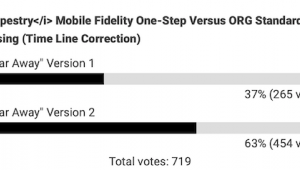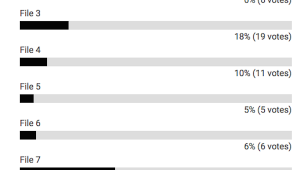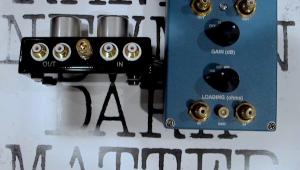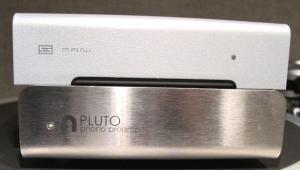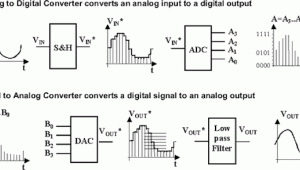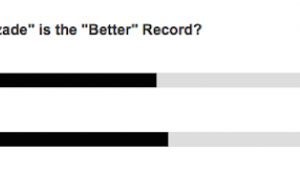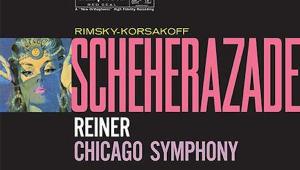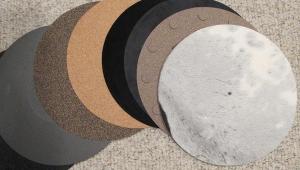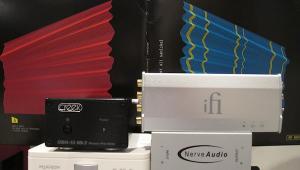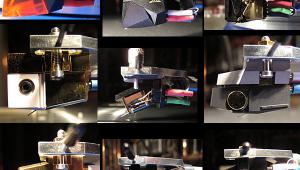There is a fade-out throughout this clip. Can you re-upload?
Primary tabs
Five Phono Preamplifiers Compared. You Be the Judge - Pick One! (File #2 updated)
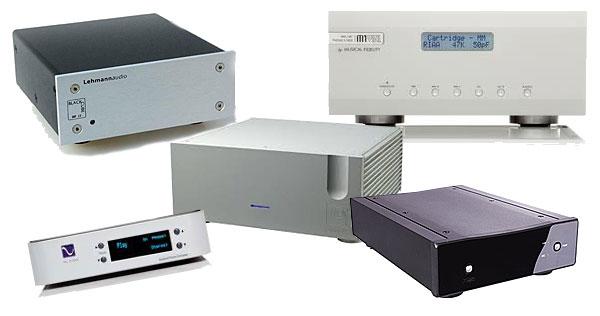
The recording of the National Symphonic Winds conducted by Lowell Graham was minimally miked using Sennheisers and captured to 30IPS ½” analog tape on John Curl’s Ultramaster reel to reel deck. The sound of the enormous bass drum is absolutely sensational as you will hear. Be prepared.
Which phono preamplifier will you think sounds best? The Rega Aria? the Lehmann Black Cube SE II, the P.S. Audio NuWave Phono Converter, the Musical Fidelity M1 ViNL or the Ypsilon VPS-100?
The first four moderately priced units were tested using a Pro-Ject Xtension10 turntable ($2995) and Transfiguration Phoenix MC cartridge ($4249). The Ypsilon ($26,000+ $6000 for the “L” series transformer) was paired with the new Lyra Etna cartridge ($6995), mounted on the Kuzma 4 Point tonearm ($6500) installed on the Continuum Caliburn (don’t ask).
You’ll find reviews of the first three on analogplanet.com. The $1199 Musical Fidelity M1 ViNL was reviewed a few years ago in Stereophile and used as a benchmark in the Aria and Lehmann reviews.
The ultra-expensive front end was thrown in just as a reference, though none of these files will be identified so you will be traveling “blind.” After listening, please vote for your favorite. When we have a sufficient number of votes we will reveal which was which. Enjoy!
Here are the five files: Right click on PC or Control click on a Mac to download to your desktop.

- Log in or register to post comments


with test 2. It seems like a fade out was done starting from the begining of the track

I haven't volume matched or done an ABX yet but apart from file #2 I'm not hearing any obvious differences between the tracks. Will be interesting if I can identify them in an ABX and when file #2 is fixed.

Frankly I think ABX testing has its uses but overall it is a trap. Basically the believers say "the ear is easily fooled. We hear what we want to hear, we see a gold face plate on a piece of gear and think it sounds "warmer" than a sliver one and blah blah blah.
Yes there is some truth to that of course. But we've evolved surviving on those same "easily fooled" senses, not ABX tests to determine if a tiger is behind us or not.
So the ABX testers say that long listens done "not blind" are not reliable because we are fooled, but what is reliable is rapid blind back and forth switching? I think that kind of test fools us more than long deliberate listens.
I took part in a "blind" amplifier test at an AES designed by someone who insisted that all amplifiers that measure the same sound the same. For some reason he threw in a warm sounding VTL 300 tube amp along with a bunch of solid state amps including an ear-bleeder Crown DC-300 which is the sonic polar opposite of the VTL.
Now, aside from the fact that I got all five identifications correct about which was which and my editor at Stereophile got four of five correct, the results among ENGINEERS AT AN AUDIO ENGINEERING SOCIETY MEETING was a statistical 50-50 "chance" result.
In other words recording engineers were unable to hear the difference between a Crown DC-300 and a VTL 300. Now that is absolutely RIDICULOUS as those amps obviously sound (and measure) very differently!
The test results tell me, blind testing of this sort produces ridiculous results and therefore is not necessarily as useful as its proponents seem to think. I did well because I am very experienced at these sorts of things whereas most engineers are not. And I had the most to lose since I was the one being challenged....
So listen 'blind" ABX, however you wish but be wary of the conclusions you draw.

"In other words recording engineers were unable to hear the difference between a Crown DC-300 and a VTL 300." --- Personal preference is one thing, but that sounds like something that may require medical attention...

As others have noted, there's a fadeout on track 2, but it also appears to be 10-15 dB down compared to the rest of the samples, which are all within about 1.5 dB of each other. Could be me, though, so I'll re-load it & if I get a different # will post that it's my bad.

track 2 -13dB . Others are pretty closely matched: -1.7, -1.6, -0.4, -0.9

I couldn't tell exactly where fadeout on track #2 begins. It seemed though, that the entire track was down, but the fadeout began after the first two strikes of the bass drum. However, If the fadeout began before that, that would likely explain the dB difference I'm seeing. Just wanted to point out what I was getting in case it is a separate issue, since Michael's said he'd re-post the file.

I'd be interested to know how people are listening to these samples, i.e. headphones or speakers, DACs or not, which software, etc.

Import & playback via Audacity loaded on a MacBook Pro > Apogee Duet 2 > Sennheiser HD 598 cans. Also Apogee Duet 2 > Denon AVR 990 (in Pure Direct) > Klipsch RF 82 II mains & a pretty low-end Klipsch 10" sub.
Also using Audacity to compare waveforms, frequency response, etc, so I've pulled charts on them all and have to say it's a very, very interesting and enlightening experiment.
I'm grateful that Michael's given us these sample files, particularly since I'm about to purchase my first stand-alone phono stage and bang for the buck's rather important to me.

I am currently an entire continent away from my DAC (a Weiss DAC202) so I only amused myself by trying to detect differences with my macbook's native headphone output into a pair of Sennheiser HD25. This is obviously pretty much futile but I felt it could be an interesting experiment. If nothing else, it might give me some insight to the quality of this output. It certainly won't let me judge the phono amps in any meaningful way.
I did hear one difference though: One track sounds more nasal than the others, especially obvious around the 38 second mark and onwards. I won't mention which track it was but I'm pretty sure others will hear this too.

I'll be curious to see the results and if I picked the most expensive model. It was extremely hard to tell them apart. I'd have a reaction right away saying oh this sounds a lot better, then go back to a previous selection thinking it sounded good too. For that kind of money I'll take the one that sounds the worst and have money in my bank account. 
From the results it seems no one can really tell them apart.
p.s. I'm not trying to snub high-end gear or people who pay a lot of money for equipment. If I had the money I would buy the best. I'm just surprised I couldn't tell more of a difference with these phono pre amps. I learned early on in this hobby that I can only A/B something so long. If I have to go back and forth too many times it's not worth the price tag whatever that might be. A/B listening has saved me a lot of money but has made me lose my marbles a few times.

I had a similar reaction to the cartridge test. After a certain point, if the audible differences are so minor compared to the price differences, save your $ for what really counts: music, loudspeakers and room treatment/correction.
Ernest Hemingway had some good advice, which non-wealthy audiophiles should take to heart: "Develop a built-in bullshit detector."

#4 has a nasal quality the other don't have. I'm guessing it is the stupidly expensive rig (not just silly expensive) since the others have a *somewhat* similar tone.

I have the M1 ViNL so it will be interesting for me to see if I voted for my phono stage rather than the most expensive. I listened using a Windows laptop running J River, via a Meridian Explorer and Sennheiser HD600s. The bass drum nearly ruptured an eardrum!

I'm very happy to have these test files to play with, and while I've dug into them all once, I still have some work to do. Still, at first listen, my initial reaction was much the same as atomlow - if I can't hear a difference, why should I pay more?
I have to wonder though, if one of the differences we might be able to pick up on would be heard only during very quiet passages, and/or between tracks. Given how much reviews discuss noise floor, "inky blacks" it's unfortunate the passage selected for the test doesn't give us any way to evaluate those attributes.
At this point all I can say is while my ears haven't picked up a lot of difference (could be my ears, my system or both - not necessarily the phono stages), closeup examination of the waveforms and graphs charting overall frequency response show that each phono stage does have its own signature.
When you compare a fraction of a second of an individual note, some phono stages appear to be reproducing it similarly, but others appear to be either doing a better job of resolving detail or adding something that shouldn't be there (I can't really say which and I damned sure wish I could).
As for frequency response, the differences are very evident when looking -20 Hz and +20kHz, but are also pretty apparent around 17Hz. For instance, while all show a peak around 12 Hz, the height & width of the peak varies greatly and rolloff to 0 Hz varies by over 20dB (perhaps the lowest is the uber expensive setup, but I haven't really tried to figure out which is which).
All this is to say that while in my case differences aren't jumping out at me when I listen, whether through speakers or headphones, there certainly are differences among all the phono stages. Consequently, I won't be basing my buying decision only on what I can hear using my current system or 60 year-old ears, nor just on what charts 'n graphs show me - more a little bit of both.
After all, while my ears aren't likely to get better, my audio system might, so might as well start with the phono stage, even if it takes better components upstream to eventually hear all it can do.

Interesting to see which one I chose. One was a lot smoother than the others, one did very poorly on my system, the rest of the three had about the same fundamental sound but with different harmonics. I have a large TAD/JBL 3 way speaker, Oppo 105 using an external Hard drive.
Dan

To make a long story short, these old ears don't hear all that much difference between these digital files. If I HAD to choose, I'd choose No. 4. But I have the original LP and it sounds far better to me than any of these files. I tried as hard as I could to match levels. You can see what I have to play it on (Mel in the Asylum); it is not SOTA and never was. And by some people's standards, it's dated.
In the first place I don't think this cut is a very good musical example to prove anything. But from the original LP I hear more of the room (though darn little) and while the depth of instruments is similar I hear some a bit closer up. Also the instruments have more of a sheen to their sounds, something which is more apparent in live than recorded listening.
Yet it proves to me, once again, that something is lost in digital translation. I know there are those who disagree, but there it is.
And I should point out that recently I've become a great fan of hi res digital. So I'm clearly not a digiphobe, but . . . analog is still better--just a lot more trouble.

I listened with the OPPO 105 DAC/ ext HD on my system and picked the winner, Then took the files to a better player, (an SD card reader, which required conversion to 5,6 DSD), and a more high resolution system and came to the same conclusions. I would like a system of ranking, one file is absolutely awful, and one is clearly the best, with second very very close to the best, and the remaining 2 good/adequate, I could live with them. I thought the last 2 drum beats, just before the end told a lot. Missouricatman, I think the object is to compare the sound, not to analyse the waveforms. Now maybe I got it all wrong, but blinded testing is the way to go, and I'll be happy if I preferred a more affordable option, rather than devastated that I am not good enough to pick the most expensive on sonic qualities alone:).

I agree in the final anaylsis it's what you hear that matters. My problem is between ears that turned 61 today and equipment that's hardly state-of-the-art, I'm not likely to hear what you hear (another poster said for them one of the tracks was "awful," and I certainly am not able to make that kind of distinction).
Studying the waveform does help me a great deal, and as I said, if it's my ears, they won't get better, but if the weakness is in my equipment upstream of the phono stage, then as I can afford it, things may get better. So from that perspective, I'm doing what I can to assure myself I'm getting the best bang for the buck - even if at the moment I can't hear the differences you do.
I'll be interested to see how younger ears rank them though, and will take that into account in my buying decision. After all, it's not just what I can hear, but what my wife who is 10 years my junior hears, as well as the 15-year-old kid across the street that tells me my Berlin Philharmonic recordings from the 60's sound, "amazingly great." (he's got 'em on his iPod now).

Listened via Foobar2000 ABX component > Firewire > MOTU Ultralite > ADAM A5X/Senn HD25 1 II. Ears 60 years old.
Picked out the one I liked the most and the one I liked least, normalised them into foobar ABX component. Got 3/5 with headphones, 2/5 with speakers.
Interestingly the one I liked best in the first 'sighted' test was the loudest, as expected, but the one I liked least wasn't the quietest.
Thanks for posting. Great fun.

I first was changing the songs and having her listen but she wasn't able to really tell the difference but I started to hear them very differently. So, I said why don't you change the songs and I'll guess which one is the best sounding. I was able to pick #1 as one of the worst sounding tracks and #4 as the best sounding track. She played them all randonly once and I told her to just start playing them again and when she hit #4 I said that's #4 isn't it and she said yes. When I listened on headphones before I thought #3 sounded the best but I realized listening in headphones probably isn't the best way to listen to these tracks. I was influenced to try to listen to these songs again when I saw that #4 was the one people picked as the best sound. When I listened to them again I realized #4 sounded the best to me as well. I hope that's the cheapest phono preamp but I doubt it. ;)

this one is hard to identify "the best one" specially with my aging ears. I'm quite curious to know the results, since this one is on vote for quite a while. Is there a minimum number of votes in order to reveal the preamp's identities?
Thanks for the tests. They are fun!

Michael, following the posted URL it takes me to the four phono preamps results (Micromega MyGroov, Nerve Audio, iPhono and Creek) Whe are in the thread of Five Phono Preamplifiers (Rega,Lehmann, P.S. Audio, Musical Fidelity and Ypsilon). I believe that therea no published results on these.

The link to the rsults is incorrect. Try here
http://www.analogplanet.com/content/phono-preamplifier-voting-results-an...
